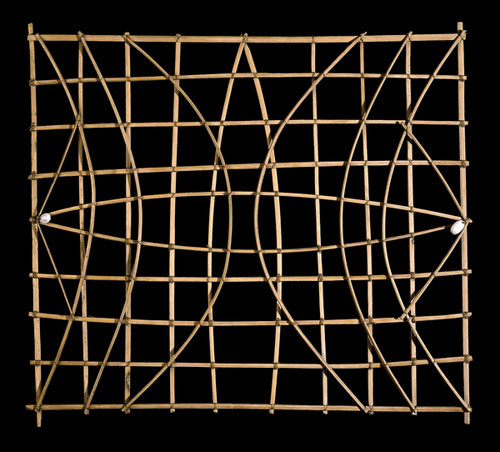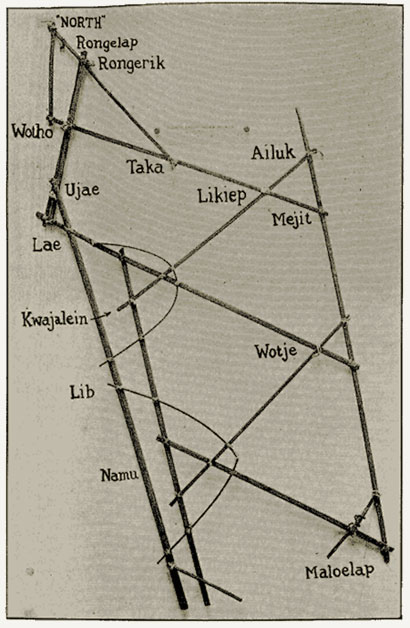
An excellent post at The Nonist discusses and illustrates the "stick charts" used by early Polynesian navigators.
The Polynesians, scattered as they were over 1,000 islands across the central and southern Pacific Ocean, were master navigators who tracked their way over a huge expanses of ocean without any of the complex mechanical aids we associate with sea fairing. They didn’t have the astrolabe or the sextant, the compass or the chronometer. They did however have aids of a sort, which though seemingly humble, were in fact the repositories of an extremely complex kind of knowledge. Called Rebbelibs, Medos. and Mattangs, today we call them simply “Stick Charts.”The three basic types of stick charts are shown, followed by addtional explanation:
The charts were made by men from thin strips of coconut frond midribs or pandanus root. They were then bound together with coconut sennit in geometric patterns depicting sea currents around the low lying atolls. Small money cowrie shells or coral pebbles indicated islands and curved sticks represent wave patterns.Via Uncertain Times. Those interested in early navigation and diffusion of knowledge through the prehistoric world should also read my post from two years ago about the Lapita people:
And how could a Neolithic people with simple canoes and no navigation gear manage to find, let alone colonize, hundreds of far-flung island specks scattered across an ocean that spans nearly a third of the globe?...
They were daring blue-water adventurers who roved the sea not just as explorers but also as pioneers, bringing along everything they would need to build new lives—their families and livestock, taro seedlings and stone tools. Within the span of a few centuries the Lapita stretched the boundaries of their world from the jungle-clad volcanoes of Papua New Guinea to the loneliest coral outliers of Tonga, at least 2,000 miles eastward in the Pacific. Along the way they explored millions of square miles of unknown sea...
Reaching Fiji, as they did a century or so later, meant crossing more than 500 miles of ocean, pressing on day after day into the great blue void of the Pacific... By the time Europeans came on the scene, virtually every speck of habitable land, hundreds of islands and atolls in all, had already been discovered by native seafarers—who ultimately made it all the way to South America...


No comments:
Post a Comment